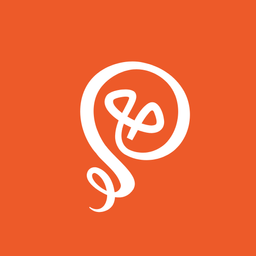How to Start Networking as a Freelancer
Networking helps you grow your business.

If you're a freelancer, chances are you don't mind working alone. Freelancing is often a solitary life — perfect for introverts and people who like working independently. However, there's one big reason you need to find and reach out to other people: networking.
Networking as a freelancer is a safety net. A strong network can be a source of new clients when work slows down. It can also support you through advice, referrals, and collaboration that can help you grow your business.
Building a network takes consistent effort. If you find yourself short on time (isn't that the case for all of us freelancers?), choose one or two networking tactics that work best for you and focus on those.
1. Connect with people on social media
Posting on social media is an entirely different ball game, and not something you have to do to build a network. You can engage with people on social media by commenting on other people's posts.
I create saved lists of LinkedIn profiles, which makes this process easier (especially since LinkedIn's feed can get weird at times). If you're using a platform like Threads, you can create custom feeds in the desktop app based on searches (like hashtags).
There are three ways to connect with people on social media.
Comment on the posts of large(ish) creators
If you engage with people who have large audiences, you're likely to get more visibility because more eyeballs will be on each post. Ideally, you should look for creators who have decent-sized audiences, but not too large. If the creator has hundreds of thousands of followers, your comment will get lost in a sea of other comments. It's also unlikely that the creator will reply to you directly.
Aim for creators with audiences between 20,000 and 50,000. The audiences are big, but not enormous, so the creator might engage. Find creators who are in a similar industry as your target customer. For example, I'm a freelance content marketer, so I'll comment on the posts of marketers with large followings.

Comment on the posts of ideal clients
You never know when an ideal client might need freelance help. That's why I don't do much cold pitching: the odds of my pitch landing in someone's inbox at the exact time they need a freelancer are slim. It adds noise to people's inboxes, since many people receive a large volume of cold pitches.
Instead, I strategically engage with ideal clients on LinkedIn, using a multi-step approach:
- Research ideal companies I'd like to work with
- Find the marketing person who works for that company
- Use the "bell" icon on that person's profile so I'm notified about new posts
- Comment thoughtfully on the person's posts
My LinkedIn headline says "Freelance Fintech Writer," so it's obvious what type of work I do. If that person ever needs freelance support, hopefully my name comes to mind since we've been interacting on LinkedIn for a while.
Another opportunity is if the company posts a full-time role. Companies hire for two reasons: they're growing, or someone has quit. Either way, they probably need immediate support, and hiring can take weeks.
If I see a full-time job post, I'll DM the contact and ask if they need any temporary freelance support until they get a new full-time hire ramped up.
Comment on the posts of fellow freelancers
Some of your biggest supporters can be fellow freelancers. Many freelancers in my network know who I am, and what I do. If they see an opportunity that isn't a good fit for them (because it's a different industry, for example), they're likely to tag me, recommend me, or send the opportunity in my direction. And I do the same for them.
2. Reach out to your existing connections
Sometimes, new freelancers forget that they have an existing network, such as former coworkers, college classmates, and past clients. Or maybe you had an awesome conversation with someone at an event, but they're not active on social media. You need to develop a system to stay in touch with people.
I use a personal CRM (I use Clay) to keep track of connections. Clay suggests people I should keep in touch with, and I'll send a message like "Hey, just wanted to check in and see how things are going with you." I make notes in Clay about the conversation, and also set reminders if I want to follow up on a specific date.
3. Join industry communities
Social media isn't for everyone, but communities are another way to network with people. I'm in several Slack communities for marketers, and I'll engage in conversations when I have something to contribute. Some communities will even post freelance opportunities, and then I have a chance to connect with the hiring manager more directly by sending a DM.
You might even find a few in-person events, like industry conferences. Conferences can be pricey, but connecting with potential clients offsets this cost (plus, you'll learn some things). I attended a large marketing conference with a few hundred attendees and walked away with three potential clients. Two didn't pan out, but one did — so it was worth attending the conference.
On top of finding potential clients, you can also expand your network, which could lead to future opportunities.

4. Ask for referrals (strategically)
Even if people in your network don't need your services, they might be able to connect you with others in their networks.
A natural time to ask is when you're wrapping up a project. You can say something as simple as, "If you know anyone who would be a good fit for my services, I'd love an intro."
You could even offer a referral fee. I worked with a designer last year, and at the end of our project together, I referred him to a few of my fellow freelancers. He ended up closing a contract, and I earned a referral fee.
Another option is to establish cross-referral arrangements with other freelancers. I work with several who offer complementary services. If a client needs something I don't offer, I know exactly which freelancer I can refer (and they do the same for me).

5. Use cold outreach as a networking tool (not a sales pitch)
I will regularly connect with people on LinkedIn, even if we've never connected in a community or IRL. If I see someone who works in my industry, I'll send a connection request. A lot of times, it leads to a brief conversation (for example, asking the other person about the type of work they do). I'll also connect to people as they join the Slack communities I'm in.
I do not pitch the person. Instead, I might send a DM occasionally and check in. I've built up many connections this way over time, and am planting the seeds for future opportunities.
You have to give in order to receive
Networking works best when you give before you ask. If you only show up in someone's inbox when you need something, it doesn't work. You have to nurture the relationship before you make a direct request.
Besides, some of the best opportunities happen when you don't have to ask at all. The real power of a network as a freelancer is when people think of you, refer work to you, or approach you with a potential project. That's when your networking efforts really pay off.
Freelance pricing is hard to figure out, but I’ve created a free resource for fellow writers. It outlines my rates, how I think about pricing, and how my pricing has evolved over time.,








